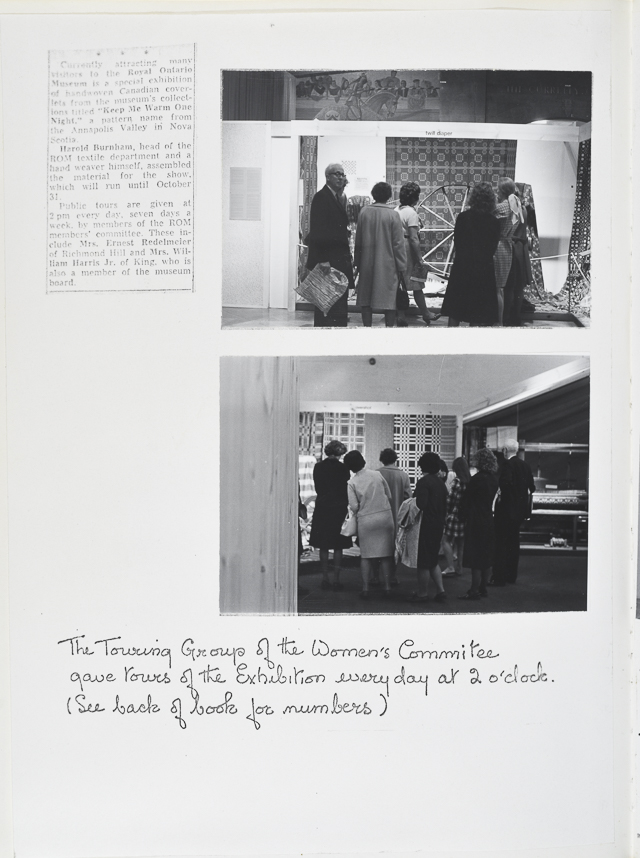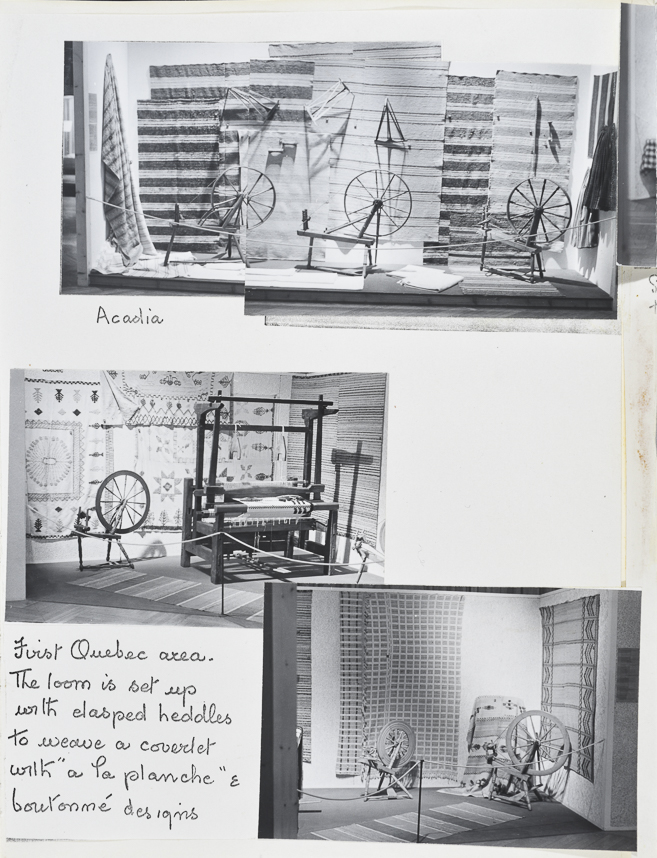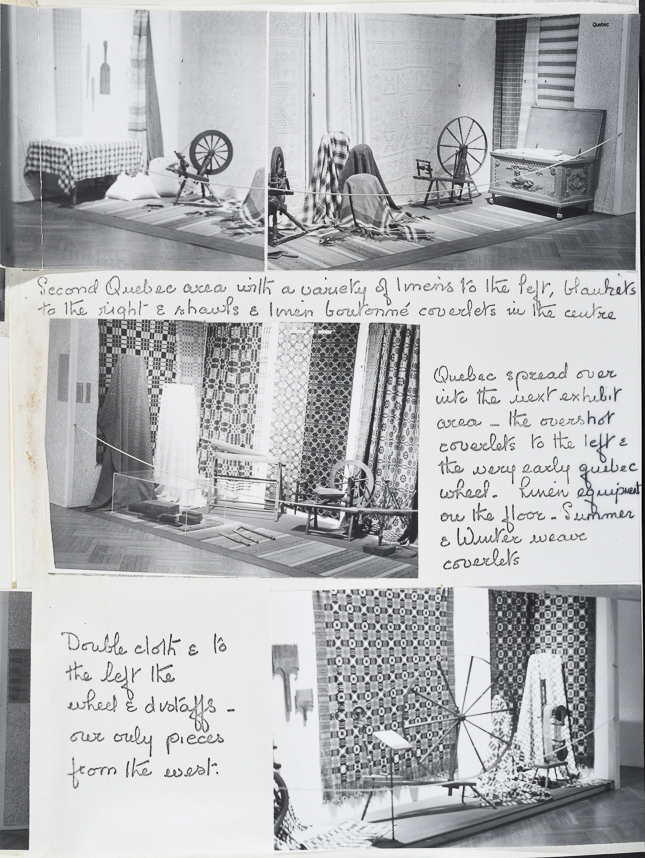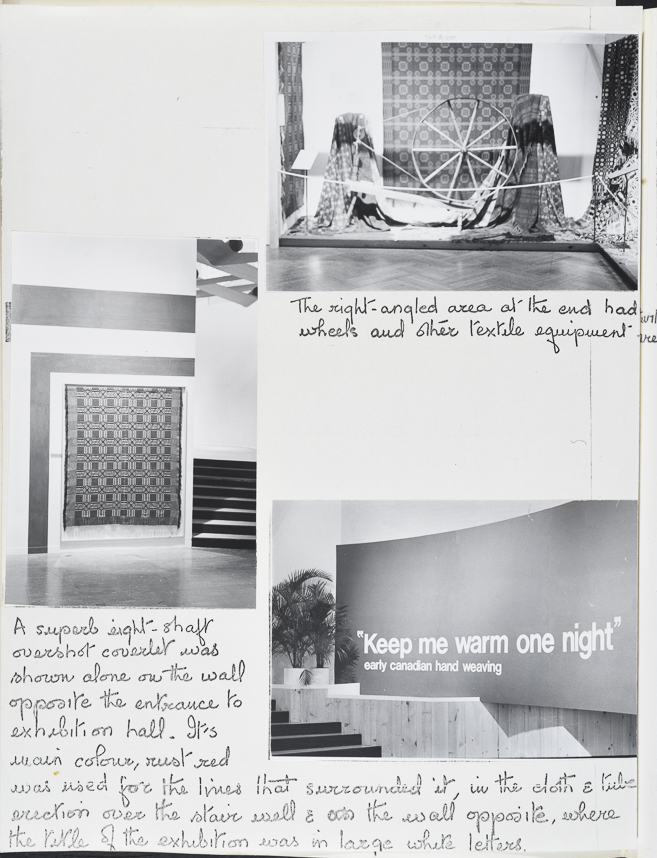#ThrowbackThursday: Exhibition Tours
Published
Categories
Author
Blog Post
In September, 1971, the ROM opened the landmark exhibition Keep Me Warm One Night, a kaleidoscopic display of over 500 pieces of Canadian handweaving. It was the culmination of decades of pioneering research and collecting by the ROM curatorial powerhouse duo 'Burnham and Burnham’, aka Dorothy K. Burnham and Harold B. Burnham.
To kick off the one-year count down to the ROM’s conference, Cloth Cultures (November 10-12, 2017), which will commemorate Dorothy Burnham’s many legacies, and to mark Canada’s approaching 2017 Sesquicentennial, we will be posting bi-weekly excerpts from Dorothy’s journal of Keep Me Warm One Night. We hope you will enjoy this unofficial glimpse into the bygone days of the ROM, and into the pioneering days of textile studies.

Transcript:
The touring Groups of the Women's Committee gave tours of the Exhibition every day at 2 o'clock. (See back of book for numbers)

Transcript:
Acadia
First Quebec area. The loom is set up with elasped [sic] heddles to weave a coverlet with "a la planche" & boutonné designs

Transcript:
Second Quebec area with a variety of linens to the left, blankets to the right & shawls & linen boutonné coverlets in the centre
Quebec spread over into the next exhibit area - the overshot coverlets to the left & the very early quebec wheel. Linen equipment on the floor. Summer & Winter wear coverlets
Double cloth & to the left the wheel & distaffs - our only pieces from the west.

Transcript:
The right-angled area at the end had wheels and other textile equipment
A superb eight-shaft overshot coverlet was shown alone on the wall opposite the entrance to exhibition hall. It's main colour, rust red was used for the lines that surrounded it, in the cloth & tube erection over the stair well & on the wall opposite, where the title of the exhibition was in large white letters.


